Highly revered in Indian Mythology for encircling around Lord Shiva’s neck. Projected as a defining character as “naag & naagin” in several Indian motion pictures telling tales of revenge. Contributing heavily to the global image of India, for being known as the land of snake charmers. And believed to be pirouetting to the very snake charmer’s tune while drinking milk received as an offering. The Indian Cobra has been in the spotlight for eons. The moderately sized, heavy-bodied snake species can easily be identified by its relatively large and quite impressive hood, which expands when threatened. This also lends heavily to its dramatic identity. Besides that, what adds to its personality is the false-eye design, located at the rear of the Indian cobra's hood. The two large black spots ringed in white with a thin black border, connected at the bottom with a U-shaped white loop, giving the snake its alternative name, spectacled cobra. While the Indian cobra does enjoy a rather fascinating individuality in a certain stratum of the society that has little or no interaction with it, the species is highly notorious amongst those who have often encounters with it. Member of the “big four” venomous snake species of India that inflict the most amount of snakebites on humans, causing 90% of the deaths due to snakebites, the Indian cobra does suffer the consequences of the same in a large segment of the community.
About the Species
The Indian cobra (Naja naja), is found mainly in India and varies tremendously in colour and pattern throughout its range. The underside colouration can be shades of grey, yellow, tan, brown, or black. Studies have also revealed a disparity in the venom composition according to their geographic location across the country.
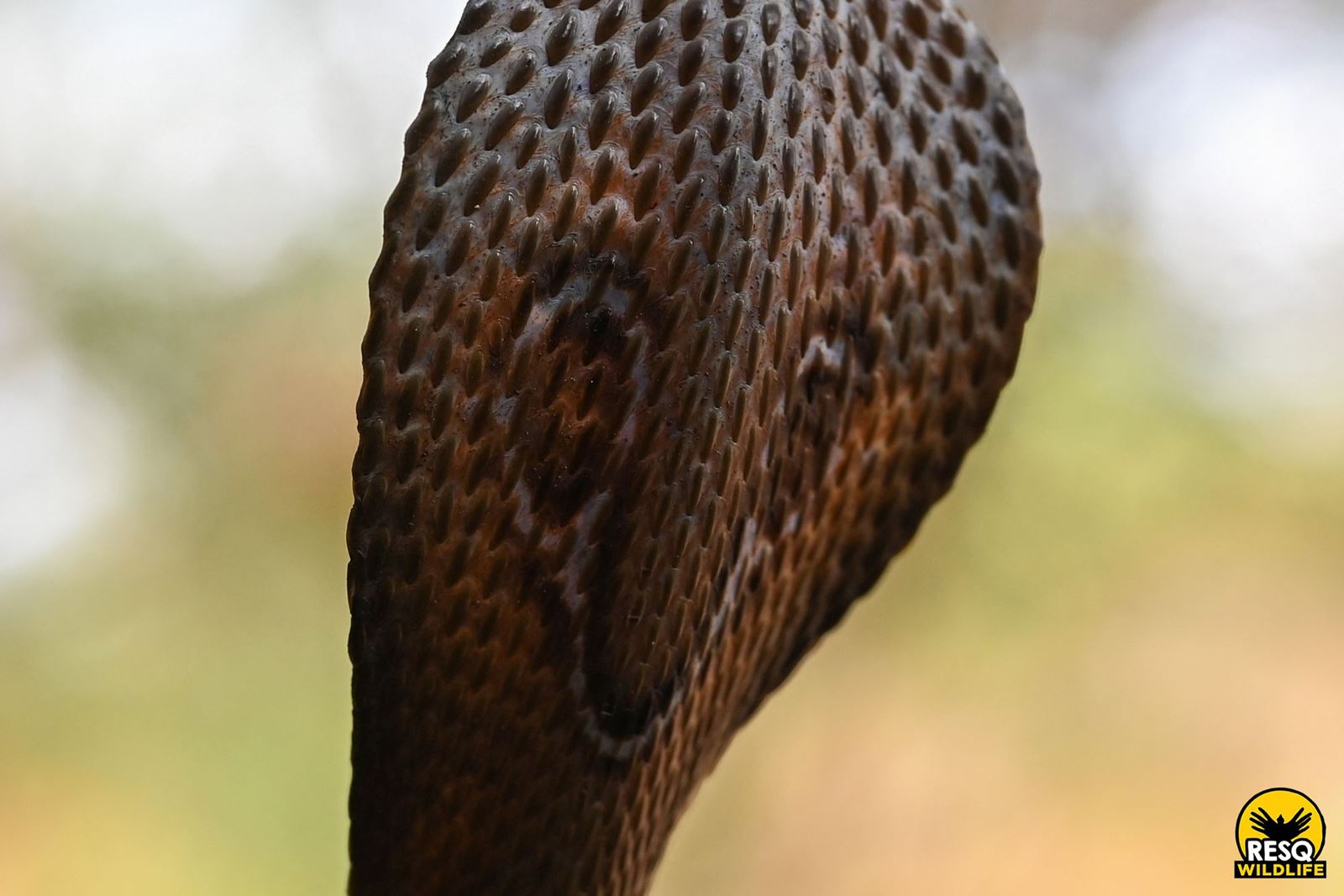
They’re mostly diurnal and solitary creatures. Primarily terrestrial, the Indian cobra can also climb trees or swim in pursuit of prey. Typically, opportunistic hunters, they slither through the wilderness silently, following their prey until they are ready to attack, but also nosh down on whatever prey comes their way. How they hunt is, to bite quickly, and then wait while the venom damages the nervous system of the prey, paralyzing and often killing it. Like all snakes, they swallow the prey whole and have a very slow metabolism that allows them to go for days or even months without feeding.
Habitat
Ground dwelling, preying on rats, frogs, toads, eggs, and also birds at times, Indian cobras have a rich population across the forests, agricultural lands, and near human habitats that have an abundance of rodents. This is how they have regular encounters with humans. They also prefer proximity to water and deep hiding places like tree hollows, mammal burrows, rock piles, and termite mounds.
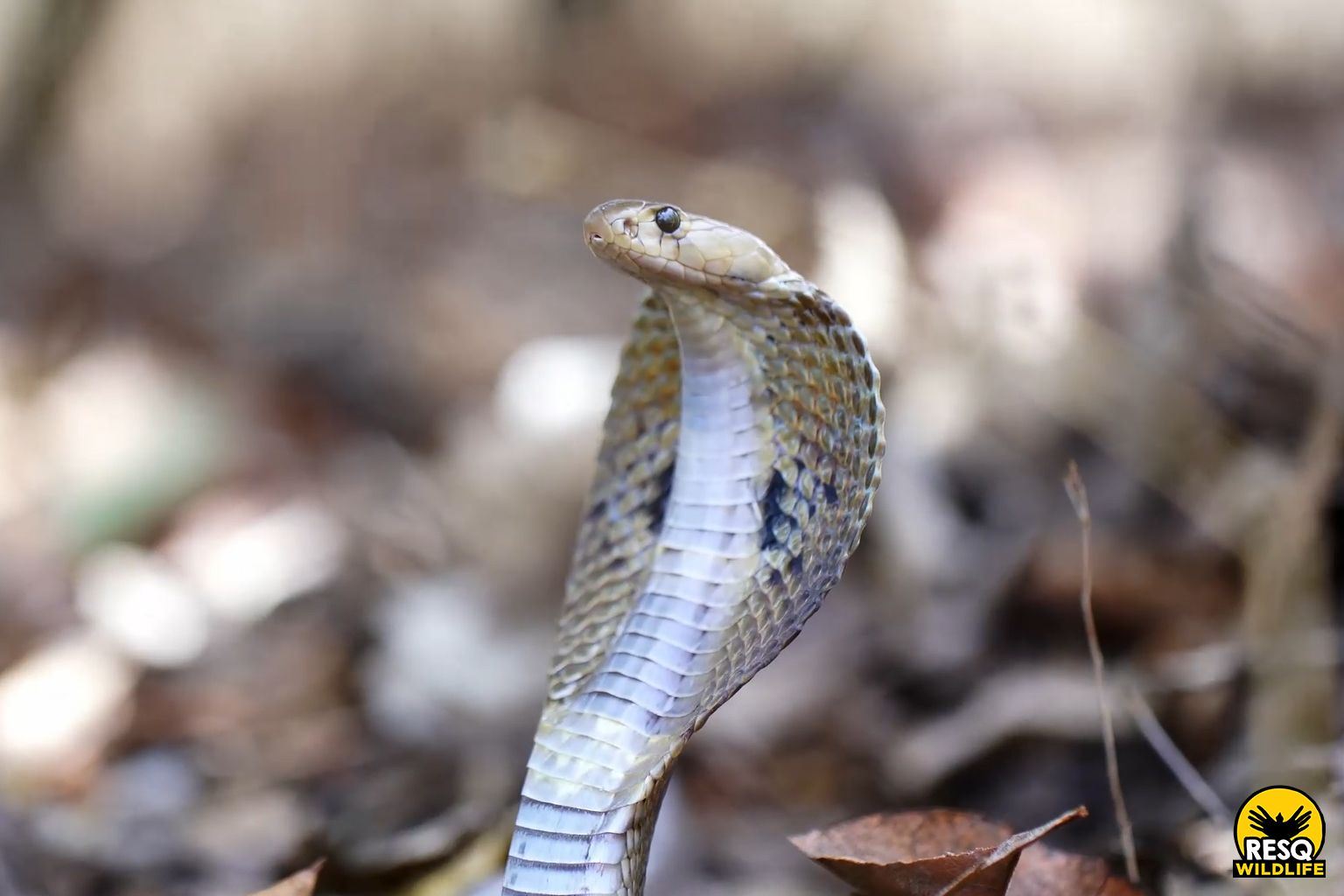
Behaviour
Indian cobras are extremely alert yet contradict the image they hold of being aggressive, Indian cobras tend to shy away from human confrontation. However, bites on humans are common, only because of accidental encounters, lack of awareness and also because of incorrect handling of the animal during rescues.
When confronting potential aggressors, including humans and mongooses, they display their hood and hiss loudly. They are usually not the ones to bite instantly with their hiss being a warning signal. They also give drybites as a follow-up warning without spewing venom.
When pushed to the corner, they strike in a downward direction and bite with their hollow front fangs, injecting a paralyzing venom. They may hang on and chew several times to deliver more venom. Cobra bites can be fatal when left untreated. They have a potent neurotoxic venom, which acts on the nervous system causing problems with vision, difficulty in breathing, swallowing and speaking, skeletal muscle weakness, respiratory failure, vomiting, abdominal pain, necrosis, and anticoagulation.
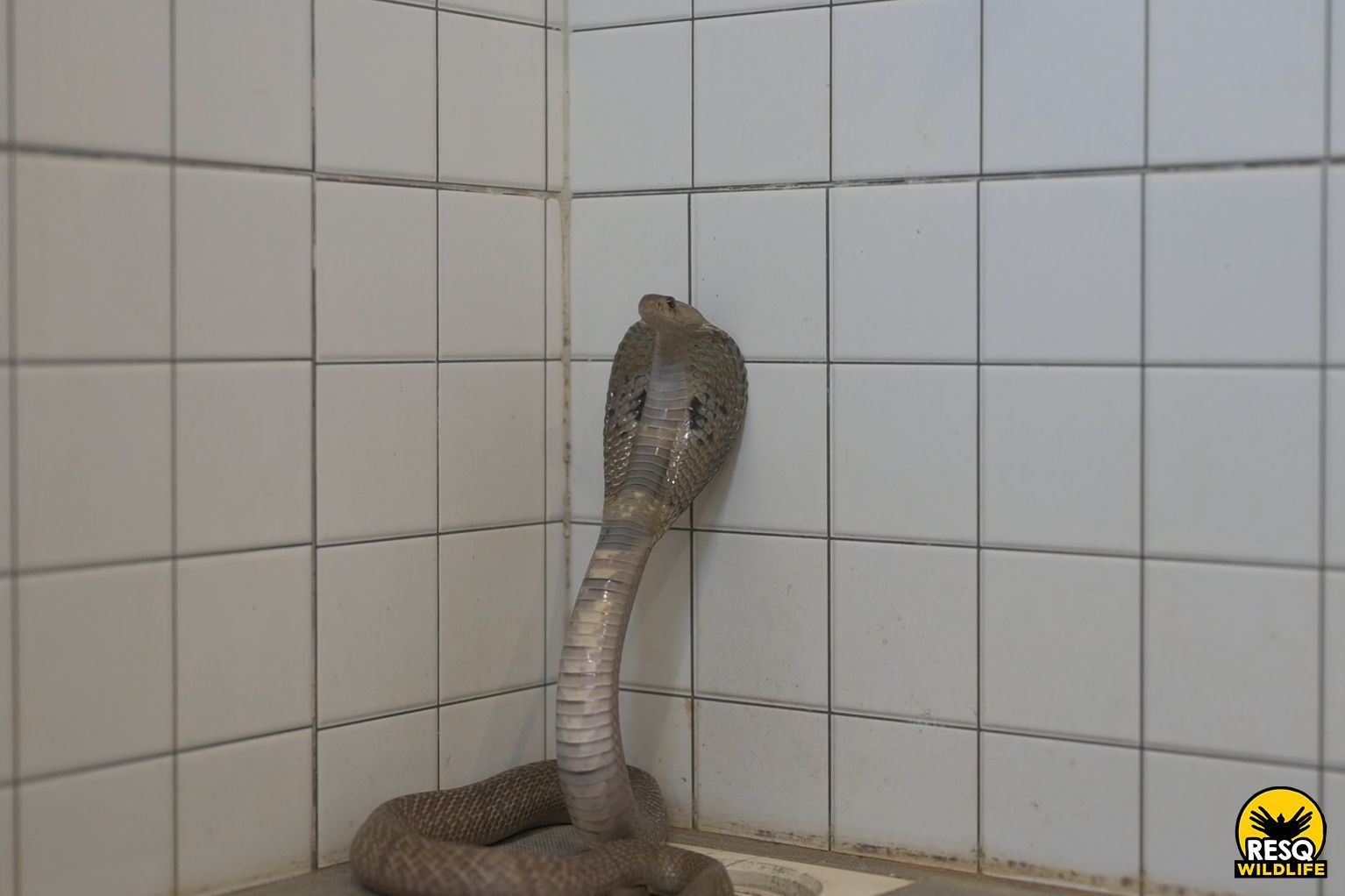
So how don’t they attack snake charmers?
Snake charmers, usually remove all the venom from the teeth of the cobras and also rely profoundly on their intimate knowledge of the animal to control its behaviour and avoid being bitten. Even the kiss of gratitude at the end of a performance is bestowed from above the snake’s head to avoid the predator-prey orientation. This is irresponsible behaviour and there are hundreds of videos circling the internet showing how quickly such situations spiral into the person being bitten by the cobra, who in its defence, is protecting itself.
Indian cobras at RESQ
RESQ has rescued, treated, and rehabilitated 124 Indian cobras so far. Most of them have been reported for entering human settlements or have been victims of human-animal conflict situations such as road accidents, dog bites, human-inflicted injuries, stuck or fallen in man-made structures like safety nets and water bodies.
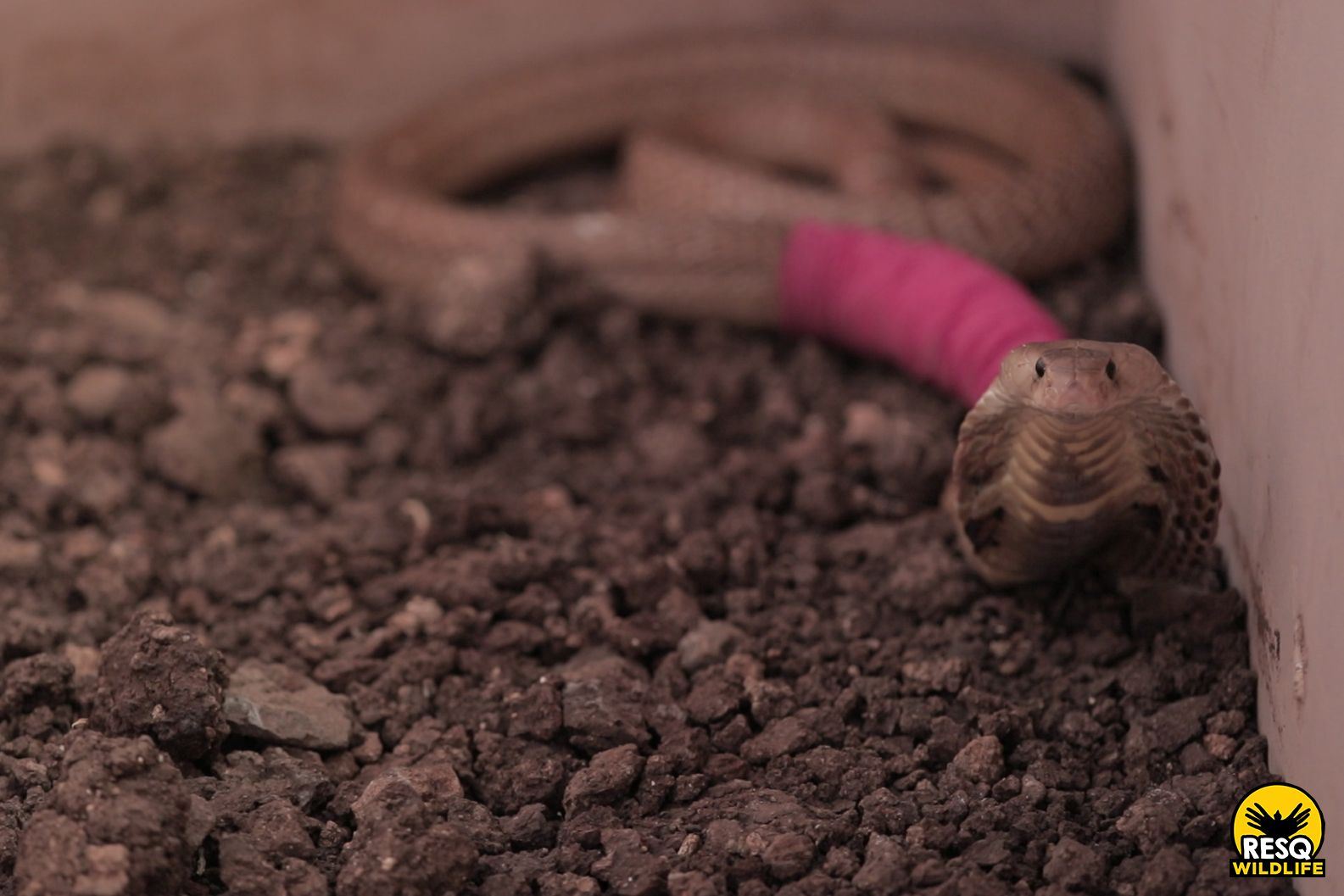
Recently we had a case of a cobra stuck in tar on a roadwork site. RESQ squad tactfully captured it and brought it to the wildlife TTC where instant treatment was dispensed. After which, the team spent a week cleaning the cobra meticulously of the tar, which was extremely important for its full recovery. When the reptile was fully clean, it was released back into the wild. All along, the cobra was housed in a snake specific enclosure, secured properly and away from human activity at the Wildlife TTC.
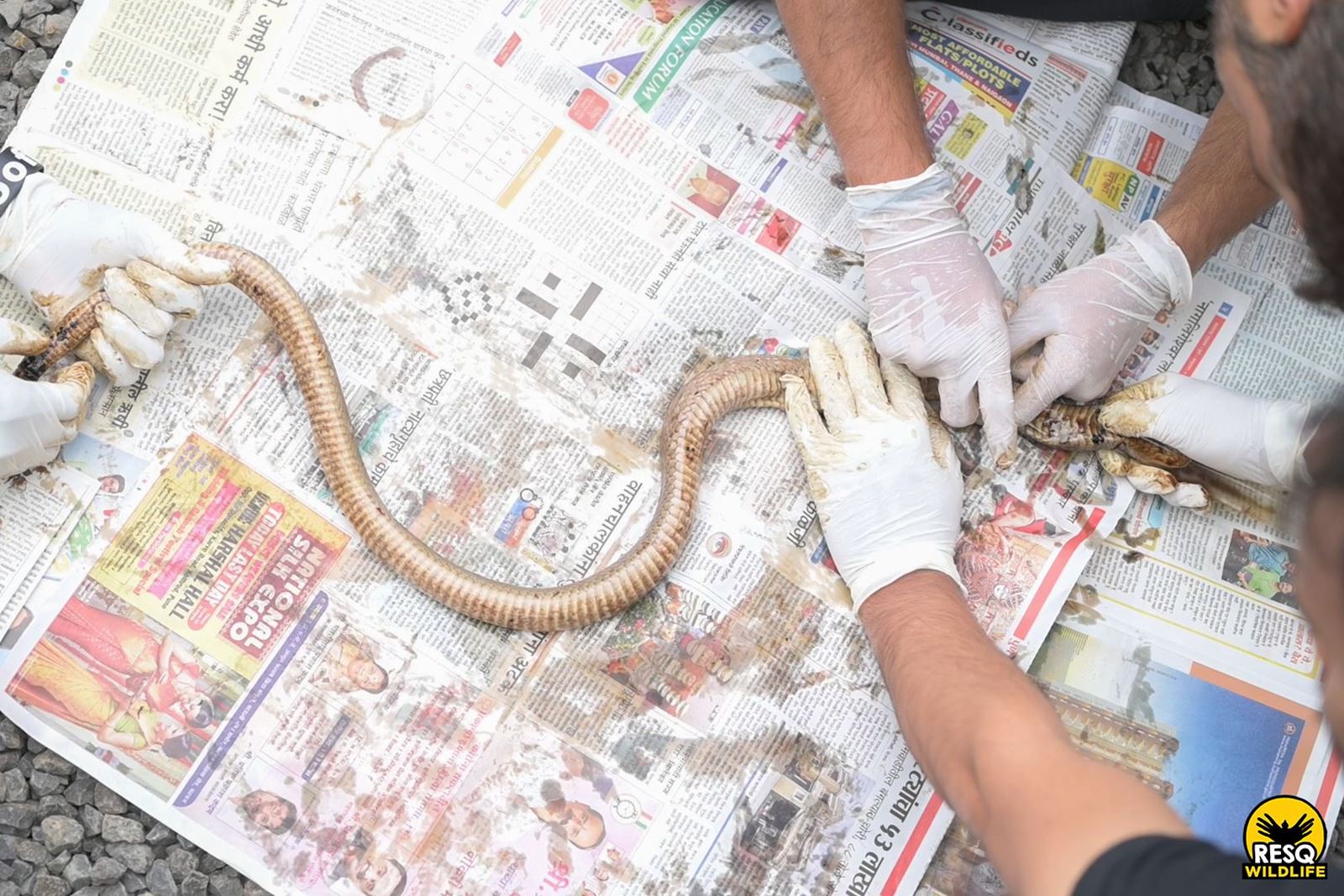
The most crucial part of rescuing snakes, especially cobras is using safe snake capture techniques. Using correct equipment such as snake hook, snake bag, and pipes to create a dark corner and boxes for transport.
To ensure the safety of the rescuer and the animal, the rescue must be conducted using the right approach and with limited or no handling of the animal. Correct rescue helps in the quicker treatment of a snake, facilitating faster release.
With high animosity for the species or the fear of it due to its perceived behaviour, what RESQ also invests time and effort in, is conducting education and awareness programs about coexistence with snakes, especially the big four. These outreach programs intend to prevent human-snake conflict situations that could result in loss of life for either. These sessions help people working on construction sites, farm owners, factory employees, etc who commonly encounter venomous snakes like the Indian cobra to act more responsibly and protect themselves from the species while ensuring the safety of the animal as well.
Coexistence with Indian cobras
If you encounter an Indian cobra, DO NOT kill it or hurt it. Make a safe passage for it to pass or call an animal rescue organisation that will responsibly remove the animal from the area. DO NOT entertain snake charmers or any such conmen who earn a living by harassing animals. Report people who wrongly handle these beautiful reptiles and in turn, end up injuring them. Respect and protect Indian cobras and they will protect you by keeping the ecosystem enriched.
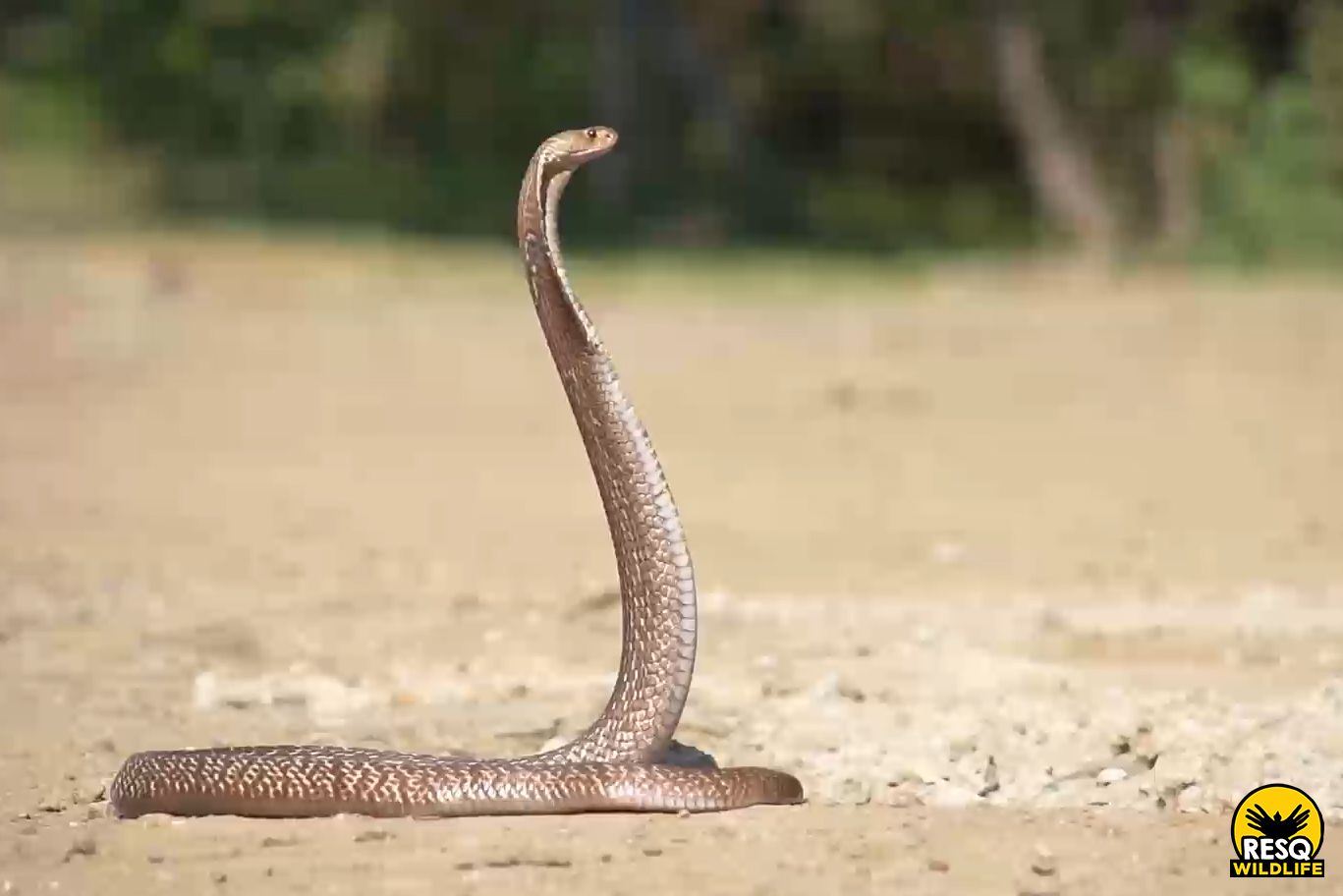
The thing to remember is that they’re protected under the Wildlife Protection Act 1972 just like all indigenous wildlife and are of tremendous significance to the ecosystem and the food chain for eating rats and mice that carry disease and eat human food.
Understanding their behaviour and knowing how to behave when you encounter a cobra is the only way to ensure peaceful coexistence with them.